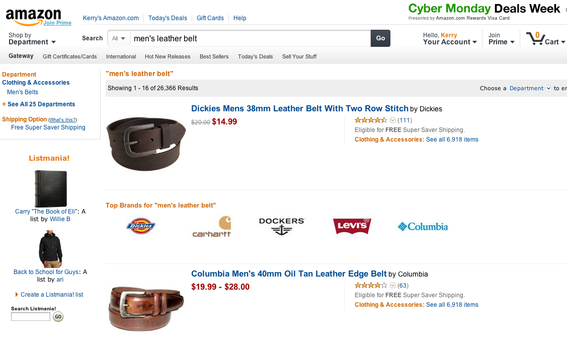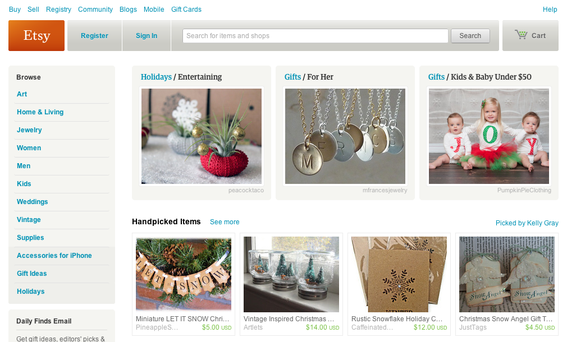This is “Part 3” in a four-part series on using marketplaces to help your ecommerce business. In “Part 1: Reviewing the Buying Experience” and “Part 2: Buying Unique, Niche Items,” I examined marketplaces from a buyer’s perspective. This installment focuses on choosing the right marketplace to fit your business strategies as a seller.
These are many factors that influence which marketplaces best support your business strategies. This article provides a checklist of factors to consider as you choose marketplaces for your business.
Selling products in a marketplace introduces risk and complexity. If you operate your own online store, you may want to target marketplaces that are likely to reach new customers, rather than ones where you will compete against yourself.
If you sell only in marketplaces, you may want to experiment with some of the new ones. In some cases, you may want to evaluate products that you have not sold previously.
In all cases, do you homework by shopping — as a consumer — in the various marketplaces, and by reading their rules carefully.
Marketplaces: 8 Factors to Consider
- Mass-market products. If you sell mass-market products, you will usually find high levels of competition on larger marketplaces like Amazon, eBay, and Sears.com. Prices will almost always be below suggested retail prices. The more popular the product, the stiffer the competition. On the other hand, you have a huge potential market. Amazon receives more than 100 million visitors per month. A smaller marketplace like Bonanza.com receives less than 1 million.
Amazon likely carries hundreds of selections for most mass-market items. This search for "men’s leather belt" produced thousands of entries. Enlarge This Image
Enlarge This Image
Be prepared to support dynamic pricing, which means you will need to monitor you prices and continually adjust them. This is very difficult to do manually. Most sellers are investing in automated tools to manage pricing across their various marketplaces.
-
Niche products. Selling niche products on a larger marketplace is a good strategy if you can get your products presented in search queries or through standard merchandizing. You may reach a market that you do not currently serve.
If you sell handmade jewelry or other crafts, investigate Etsy.com, Artfire.com, Shophandmade.com, Craftisart.com, and the other craft sites. Etsy, for example, receives more nearly 10 million visitors per month, making it attractive for sellers. If you are a designer, look at Zazzle.com. Other smaller marketplaces like Bonanza.com, iOffer.com, and eCrater.com offer a potential outlet for more unique products that are not necessarily handmade.
Etsy is a good marketplace to sell unique, handmade items.
In general, you will be able to maintain your pricing and margins for unique items.
-
Mind your margins. You likely would sell an item for a loss in your own online store only if you could upsell or cross-sell on a higher margin item. In marketplaces, you will not control that upsell or cross sell. So in many cases you will sell just a single item per order. Unless you want to dump inventory, don’t price near or below your cost.
-
Traffic and conversions. The major marketplaces are much larger in traffic and competition. Be sure to navigate in them to determine the visibility of your products. Evaluate if you are likely to get traffic to your items and whether they will be price competitive. Your conversion rates will likely be good if you have 1 to 3 competitors for a product, but very low with 5 to 15.
-
Your customer or theirs? With Amazon in particular, the customer is Amazon’s, and not yours. You will not be allowed to market to buyers in any manner. Don’t kid yourself that by naming your Amazon store the same as your website, you will get those customers eventually. It’s unlikely, in my experience. They are shopping on Amazon because it is convenient and because Amazon delivers the experience they want. You are better off naming your Amazon store differently than your online store. That will free you to offer whatever pricing you want in your own store.
Other marketplaces are much more liberal in this regard. You will need to carefully read the store policies and seller rules for each marketplace to determine its stance on pricing, disputes, payments, and exactly what you are required to do to sell there.
-
Seller’s fees. Thoroughly study your options as a seller to determine your real selling fees. Most marketplaces offer several options for sellers. Be sure to pick the one that matches your volume and margins.
With most marketplaces, you incur a fee based on a percentage of the sale. That will likely differ based on the type of products you are selling. You may also incur a monthly charge for setting up a store within that marketplace. There may also be listing fees by item or other types of charges.
Be realistic about these fees. I’ve talked to many merchants who think that giving up 15 percent of their sales to a marketplace is too expensive. On the other hand, if your overall cost of marketing is around 10 to 15 percent anyway, are you really giving anything up?
-
Ability to execute. Marketplaces introduce their own rules that will likely affect your business processes. These include response times to questions, shipping turnaround, and return policies. They may impact your ability to meet their expectations and their customers’ expectations.
-
Managing multiple channels. You will need to ensure that the products you are offering are in stock. Your ecommerce platform, therefore, should support multiple channels and integrate in some way with your various marketplaces. Beyond just inventory control, you should capture orders in your order management system, confirm their shipments, and enter the sales details into your accounting system.
You need a centralized system to manage your product catalog so that all marketplaces are in sync. If you are selling a few dozen products, you may be able to manage without automation. But if you are selling hundreds or thousands, you will likely need to invest in a channel management platform.
Conclusion
Identify appropriate marketplaces for your business, and then experiment. Try a few products before you upload many. Pay attention to how the marketplaces will impact your business processes. Be aware you may need to introduce more automated tools if you select larger marketplaces.
I will address automated platforms that support multiple marketplaces in the final installment of this series.




